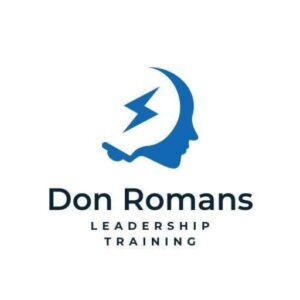In today’s fast-paced and dynamic corporate world, one of the salient factors that determine an organization’s success is its ability to inspire and motivate its staff. While the term “motivation” is often widely used, it is a complex and multifaceted concept that goes beyond simple morale boosting and incentives. This analysis seeks to dissect the notion of employee motivation, examine its types, and explore the importance it holds within the workplace setting. Additionally, it aims to identify successful methods to galvanize employees and to discuss the challenges faced while trying to instill motivation. Ultimately, the purpose is to recognize the impact of motivation on business performance by providing tangible examples and data.
Understanding Motivation
Understanding Motivation
Motivation is considered the driving force that compels or reinforces individuals to act in a certain way, to realize personal or organizational goals. In a workplace context, it signifies the level of energy, commitment, and creativity that employees bring to their jobs. This element is vital because it directly impacts work performance, productivity, and organizational morale.
Motivation Theories: Maslow’s Hierarchy of Needs
One of the widely referenced theories of motivation is Abraham Maslow’s Hierarchy of Needs. It proposes that human needs can be organized into five levels, and people are motivated to fulfill these needs from the most basic to the more complex. The levels of needs according to Maslow, from basic to complex, include physiological needs (food, water), safety needs (security), social needs (friendship, belonging), esteem needs (status, recognition), and self-actualization needs (realizing one’s full potential). While this theory has been criticized for its lack of empirical evidence and its ethnocentric bias, it offers valuable insights into the varied motivators that can influence employee behavior and performance.
Motivation Theories: Herzberg’s Two-Factor Theory
Another influential theory is Frederick Herzberg’s two-factor theory, also known as the motivation-hygiene theory. According to this theory, there are two factors involved in motivating employees: the motivating factors (intrinsic) and the hygiene factors (extrinsic).
Motivating factors are those aspects of the work itself that can lead to satisfaction and motivate employees to put in more effort. These can include challenging work, recognition, involvement, job satisfaction, and opportunities for promotion.
On the other hand, hygiene factors do not directly motivate employees but can cause dissatisfaction if not properly handled. These factors include company policy, supervisory practices, salary, interpersonal relations, and working conditions. Herzberg suggested that employers should ensure hygiene factors to avoid dissatisfaction while enhancing motivators to stimulate performance.
The comprehension of these motivational theories allows managers and employers to pinpoint, strategize, and execute powerful motivation techniques in their work environment. These techniques, encompassing both intrinsic and extrinsic motivators, help create a productive and fulfilling vibe for their workforce. The end result of acquiring a better understanding of how to effectively motivate employees can lead to a surge in retention rates, work quality, and efficiency within the workforce.

Methods to Motivate Employees
Using Incentives to Boost Motivation
Various types of incentives can be used by businesses to boost employee motivation. The famed tech company, Google, stands as a perfect example, offering some of the sector’s most remarkable benefits including complimentary gourmet meals, wellness facilities like massage rooms, and laundry facilities. Many companies go a step further and provide monetary bonuses when employees hit critical performance targets or when they refer a successful candidate for employment. It’s important to note that for such incentive programs to succeed, they must be thoughtfully crafted and should focus on promoting employee behaviors that drive the success of the entire organization.
Opportunities for Growth and Development
Another effective method to motivate employees is to offer opportunities for growth and development. For instance, General Electric has developed a culture of continuous learning by creating its own corporate university. This strategy allows employees to continually enhance their skills and knowledge, which increases both their job satisfaction and performance levels. This approach also signals to employees that the organization is invested in their long-term success, further fostering loyalty and dedication.
Recognizing Employee Achievements
Employee recognition programs are another excellent way to motivate and engage staff. Well-implemented recognition programs can increase job satisfaction, productivity, loyalty, and employee morale. Companies like Southwest Airlines have led the industry in creating a culture of recognition. For Southwest, recognition is linked to business outcomes, and it’s not just about giving out awards. The company continually praises everyone, from baggage handlers to pilots, in a variety of ways, such as internal newsletters and public events.
Fostering a Positive Work Environment
Maintaining a positive work environment is also critical in motivating employees. Silicon Valley powerhouse Salesforce has a unique approach known as the Ohana culture, treating employees as part of a larger family. This generates a sense of belonging, which ultimately leads to higher employee engagement and productivity. A positive work environment often includes open communication, a clear mission, freedom to innovate, and the opportunity to take part in decision making.
Flexibility in Work Scheduling
This method involves providing employees with the flexibility to adjust their working hours or location to meet their individual needs. Global auditing firm Deloitte, for example, has a flexible work program including telecommuting and compressed workweeks, allowing employees to have control over their schedules. This can result in improved employee morale, enhanced work-life balance, and ultimately higher productivity. The pandemic has highlighted the validity of this method, as remote work and flexible scheduling have become widespread, often resulting in higher employee satisfaction and productivity.
In order to thrive and succeed, companies need to focus on motivating their employees. A combination of varied incentives, career growth opportunities, employee recognition programs, a positive working environment, and flexible work schedules becomes the key. It’s important that these approaches tie in with the company’s larger objectives and values, and also fulfill the individual needs and desires of the employees. When these strategies are thoughtfully planned and implemented, they can have a substantial positive effect on employee motivation and overall work efficiency.

Impact of Motivation on Business Performance
The Significant Impact of Employee Motivation on Productivity
Highly motivated employees are a valuable asset that can substantially enhance a business’s profitability. Research data indicate a significant correlation between an employee’s motivation level and their overall productivity. For instance, a report by Gallup revealed that teams with high engagement levels were 21% more profitable. These motivated employees demonstrate enhanced efficiency, creativity, and commitment to their roles, resulting in increased productivity and enhanced quality of work. This, in turn, leads to considerable business profit growth.
Employee Motivation and Retention
Employee retention is a clear indicator of the positive impact of motivation. According to Corporate Leadership Council, highly engaged employees are 87% less likely to leave their companies than their less engaged counterparts. Employee motivation often determines how long employees stay within a company, impacting recruitment costs and providing stability for the business. When employees feel motivated and valued, they are more likely to support the company’s objectives and remain loyal, acting as stable pillars for the organization’s growth and success.
Interplay Between Employee Motivation and Customer Satisfaction
Motivated employees often provide better customer service, leading to higher customer satisfaction. According to a survey by American Express, 68% of customers believe that a pleasant representative is key to their recent positive service experiences. If employees are motivated and happy in their roles, this positive aura can spill over into how they treat customers. This builds customer loyalty and leads to repeat business, dramatically impacting a company’s profits and overall success.
Overall Impact on Business Success
Research data strongly advocates that employee motivation carries a profound overall impact on business success. Motivated employees boost productivity, maintain higher work quality standards, lower staff turnover rates, and promote greater customer satisfaction, all positively affecting profitability. It’s also likely that all of these elements combined create a virtuous cycle. Enhanced business performance further motivates employees, making them feel integral to the company’s success and thereby fostering an even stronger work ethic.
The Importance of Employee Motivation in Business Practices
In the realm of business, the role of employee motivation cannot be overstated. A company that recognizes its importance and is proactive in encouraging it, experiences significant advantages. By implementing effective strategies such as rewards, recognition, development opportunities, and maintaining a positive work environment, the overall performance of the business can see substantial enhancement. Motivation is more than merely a business tactic; it is an expression of a company’s appreciation and respect for its employees. These workers are the vital cogs turning the wheels of success and further growth. Thus, comprehending the influence of motivation on business performance is not only a fundamental factor for making a profit, but it also lays the foundation for a sustainable and healthy company culture.

Challenges in Motivating Employees
Deep Dive into the Concept of Motivation
The task of motivating employees is a perennial undertaking that is critical for businesses and managers alike. It is crucial to acknowledge that motivation is not a uniform concept that fits everyone equally. It fluctuates significantly among different employees, presenting a complex challenge. Factors such as generational diversity, an individual’s unique needs, and the prevailing work environment play significant roles in shaping motivation.
Varying Individual Needs and Motivations
Besides, an individual’s personal needs and circumstances can significantly affect their motivation levels. An employee who is going through a challenging personal period may be currently unmotivated, regardless of any incentives their employer offers. Additionally, some employees may be motivated by external factors such as monetary rewards, while others are driven by internal rewards, such as job satisfaction or the feeling of accomplishing something worthwhile.
As a response to these different needs and motivations, employers are adopting a more personalized approach to motivating their employees. This can involve thoughtful initiatives, such as introducing flexible working hours or remote working for those with significant commuting challenges, offering further training or education for those aiming for career progression, or providing health and wellbeing programs to support employees’ personal wellbeing needs.
Maintaining Motivation Over Time
Maintaining motivation over time can be a significant challenge for organizations. Often, the enthusiasm that accompanies a new prospect or a promising idea can wane over time, leading to a drop in motivation. This decline can be due to various reasons, ranging from burnout as a result of overworking, lack of recognition for efforts made, or feeling stagnated in one’s role.
Addressing this issue requires employers to be proactive in maintaining a positive and engaging work environment. This can be ensured through regular feedback sessions to recognize employees’ hard work, providing opportunities for skill development and career advancement, encouraging a work-life balance, and ensuring an open dialogue to address any concerns raised by employees.
Giving recognition and support
Given these various challenges, one crucial factor in motivating employees is understanding that employees are unique individuals with differing needs and motivations. It is therefore necessary for managers and leaders to take time to understand their employees, appreciate the diversity, and implement tailored strategies to improve motivation. By doing so, they foster an environment where every employee feels valued and motivated to contribute towards achieving the organization’s goals.

Any endeavor to motivate a workforce must be underpinned by a thorough understanding of what motivation is, the different methods that can be utilized to cultivate it, and the unique challenges that may arise during its execution. Multiple elements such as generational differences, individual needs and motivations diversify the playing field, making the task harder. But amidst these challenges lie vast opportunities for businesses to enhance their bottom line by nurturing motivated employees. The path to instigating significant business success is not easy, yet businesses that have managed to overcome these difficulties and constantly motivate their employees have reaped considerable benefits. Therefore, the art of motivating employees is not just an add-on in an organization’s policy, but is in fact a thriving engine of its success.

